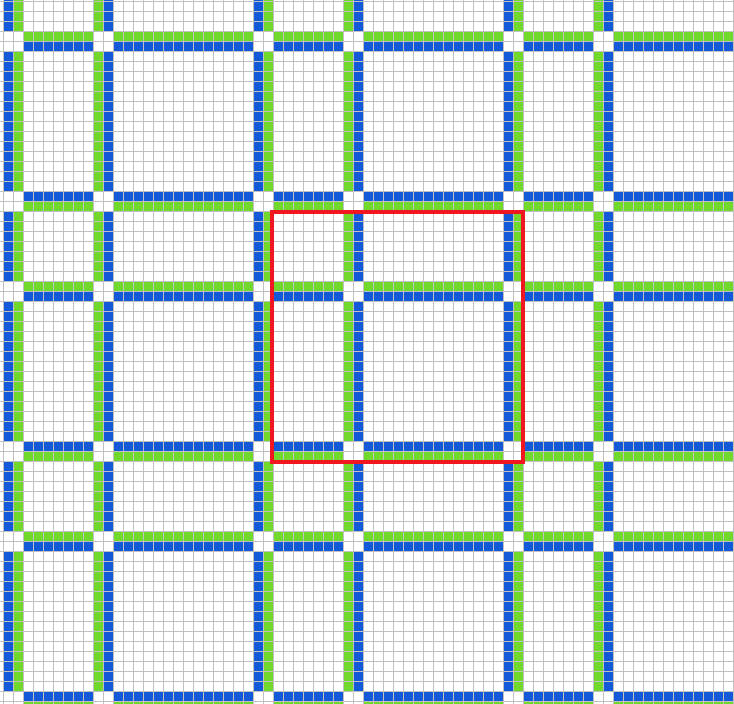Here's simple 2-D pattern that seems to tile quite efficiently:
The area of the each tile (blue square) is $21\times21 = 441$ tiles, and it contains $4\times14=56$ generators tiles, for a ratio of $\frac{56}{441} \approx 12.7\%$
The trick here is that
it's easy to double the density to $\frac{112}{441} \approx \mathbf{25.4\%}$ by adding a copy of the pattern, staggered so that the required empty spaces (marked in pink in the image above) overlap. This happens nicely as long as the copy is moved 9 to 12 tiles both horizontally and vertically.
The final pattern looks like this:
EDIT:POST-TICK EDIT: managed to find an even better pattern with $\mathbf{26.88\%}$ utility.
Green is the back side, the large square's sides are made of two generators each.
The repeating pattern's (red square) side is $7+2+14+2=25$ tiles long, and it includes $12$ generators, which take up $ \frac{12 \times 14}{25\times25} = \mathbf{26.88\%}$ of the total area.



